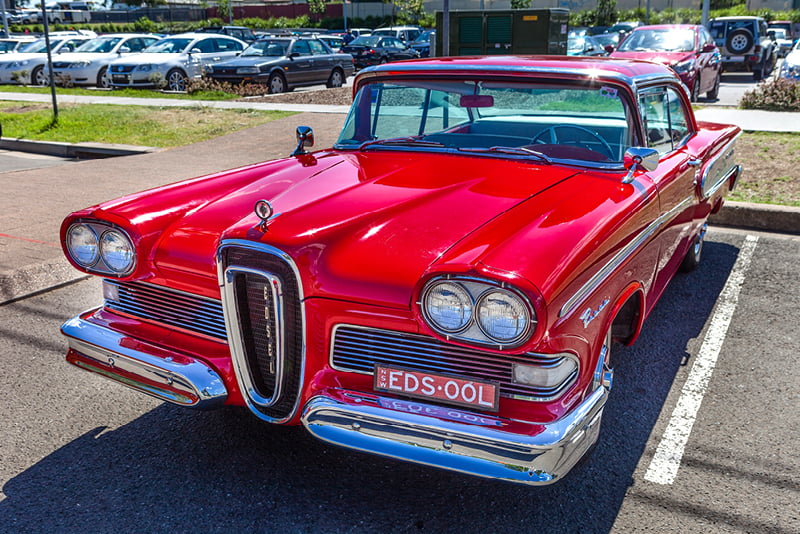Prior to its public launched on September 4 1957, the Ford Edsel was the most anticipated new car release in American history – but was it worth the hype?
The iconic vehicles of yesteryear don’t only appeal to car lovers, but also attract those passionate about engineering, design, art and yes, history. Before cars were built for efficiency and speed, it was about the experience, style, exclusivity and ultimately, craftsmanship – making them timeless, works of art.
While the name “Ford” is most commonly associated with the family style sedans of the 21st century, in a different time the Ford Motor Company pioneered vehicles that partnered innovation, practicality and style. In fact, Ford Motor Company founder Henry Ford changed the world in 1908, with the launch of the Model T. He went on to pioneer the assembly line mode of production, revolutionise the automotive industry, and sell millions of cars around the world.
As the sole heir to the empire and following in the footsteps of his father, Edsel Bryant Ford held the position of President at Ford Motor Company from 1919 until his death in 1943. While groomed from a young age to eventually take the reins, Edsel was always eager to develop cars that were more in line with his own personal taste, and went on to do so with the release of a new brand of motor vehicles in his own name.
However, even though Edsel Ford had the keys to the kingdom in the palm of his hand – the Ford Edsel range is still regarded as one of the biggest flops in automotive history. What the Ford Motor Company promoted as “the car of the future”, instead became the poster child for commercial failure – but how did it all go so wrong?
Why The Ford Edsel Range Was A Flop
The birth of the Ford Edsel brand can be attributed to a need for diversity. Ford wanted a new mid-priced brand to attract buyers who might have otherwise been inclined to opt for Dodges, De Sotos, Pontiacs, Oldsmobiles or Buicks. In the year leading up to its release, Ford invested heavily in advertising campaigns, marketing Edsels as “the cars of the future”.
However, this new division only lasted two short years from 1958 to 1960, before it was quietly retired. While the 1958 Ford Edsel Pacer represented a step up from the basic Ranger model, it received contoured seat backs, nylon upholstery cloth, colour-keyed rubber floor mats, and extra stainless steel exterior and interior trim pieces and window mouldings. Unfortunately, the models were also considered to be overhyped, unattractive (distinguished by a vertical grille), and low quality by consumers, and Ford posted losses of over $250 million in the development, manufacturing, and marketing on the model line. With modern inflation, this number is over $2 billion dollars, so it’s understandable as to why Ford bit the bullet and ceased production in such a short time frame.
However, modern experts often do disagree on exactly where Ford went wrong with the Edsel range. Several theories include faults with the vehicle styling, poor workmanship, and an overall corporate failure to understand the wants, needs and desires of the American consumers of that era. Not only were the Edsel models competing against its own sister divisions, but model for model, buyers did not understand what the cars were supposed to be – a step above the Mercury, or a step below it?
The failure of the Ford Edsel range was only exacerbated by an overall sentiment of being “the right car at the wrong time”. One of the external forces working against the Edsel brand was the onset of an economic recession in late 1957, which hit the American economy just one year before the first release of the 1958 Ford Edsel Pacer. To make matters still worse, as a new make, Edsel had no established brand loyalty with potential buyers, as its competing makes had.
The silver lining in the Ford Edsel story is that it still had it’s comeback story – albeit, perhaps a few decades too late. While the Edsel name is still synonymous with failure, the cars actually enjoy a loyal following and make great collectibles today, with the low-production 1958 Pacer convertibles being among the most highly valued. Popular pricing guides list 1958 Pacer and Citation convertibles at more than $20,000 on the low side and upwards of $60,000 on the high end, with both being relatively scarce for collectors to get their hands on. With a little time, it seems that automobile enthusiasts were finally willing to forgive the flaws, in favour of exclusivity.

